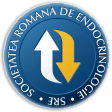
- Login
- Register
- Home/Current Issue
- About the journal
- Editorial board
- Online submission
- Instructions for authors
- Subscriptions
- Foundation Acta Endocrinologica
- Archive
- Contact
 Romanian Academy
Romanian Academy
 The Publishing House of the Romanian Academy
The Publishing House of the Romanian Academy

ACTA ENDOCRINOLOGICA (BUC)
The International Journal of Romanian Society of Endocrinology / Registered in 1938in Web of Science Master Journal List
Acta Endocrinologica(Bucharest) is live in PubMed Central
Journal Impact Factor - click here.

Showing 1 - 2 of 2
-
Case Series
Ozisik H, Yurekli BS, Tuncel R, Ozdemir N, Baklaci M, Ekmekci O, Saygili F
Pseudopseudohypoparathyroidism as a Cause of Fahr Syndrome: Hypoparathyroidism not the Only OneActa Endo (Buc) 2020 16(1): 86-89 doi: 10.4183/aeb.2020.86
AbstractIntroduction. Fahr’s syndrome is an infrequent disorder characterized by bilateral symmetrical calcification of basal ganglia and the cerebral cortex. It can be seen genetic, idiopathic, or secondary to endocrine diseases. This disease is related to different metabolic disorders particularly with diseases of the parathyroid gland. Case 1. A 63-year-old female patient applied to our clinic due to having hypoparathyroidism with bilateral basal ganglia calcification in head computed tomography(CT). She had subtotal thyroidectomy 25 years ago. In the neurological examination, mild symmetrical parkinsonism was determined. In laboratory examination Ca:8 mg/dL (8.6- 10.2), P:5.1 mg/dL (2.3-4.5), PTH:9.53 pg/mL (15-65) were detected. Calcitriol 0.25 μ/day was added to her treatment. Her parkinsonism disappeared after the treatment. Case 2. A 49-year-old male patient was consulted when he was admitted to the department of neurology in our hospital. The physical examination demonstrated the characteristics of Albright’s hereditary osteodystrophy. The neurological examination shows bilateral symmetrical bradykinesia, dysphagia, and moderate dysarthria. In the laboratory examination PTH: 46.5 ng/L(15-65), Ca:8.6 mg/dL (8.6-10.2), P:2.7 mg/dL (2.3-4.5) were detected and were all within the normal ranges. Consequently, pseudopseudohypoparathyroidism was decided as a diagnosis. G protein alpha subunit mutation (Gsα) was not detected due to technical limitations. Conclusion. When a patient is diagnosed as Fahr’s syndrome, we should keep in mind parathyroid disorders. Fahr’s syndrome must be evaluated in patients showing intracranial calcification accompanied by parathyroid diseases. -
Perspectives
Guler AM, Emrence Z, Bozdag EN, Pacal F, Abaci N, Tanakol R, Ekmekci SS
Effects of Variations in Bone Metabolism Related Genes on Bone Mineral Density of Patients with OsteoporosisActa Endo (Buc) 2024 20(4): 413-421 doi: 10.4183/aeb.2024.413
AbstractObjective. Osteoporosis is a complex disease and its development is influenced by genetic, epigenetic, metabolic, and environmental factors. However, specific genetic factors associated with osteoporosis are not fully understood. The aim of this study was to identify genetic risk factors for osteoporosis. Methods. This study included 86 females with osteoporosis and 47 healthy females. We analyzed rs1800587, rs16944, rs1799814, rs4988321, rs2228570, and rs35211496 variations in IL1A, IL1B, CYP1A1, LRP5, VDR, and RANK, respectively, using polymerase chain reaction-restriction fragment length polymorphism (PCRRFLP) analysis. Results. Our analysis revealed that the CT and TT genotype for rs1800587 in IL1A was associated with higher bone mineral density in the lumbar spine, trochanter, Ward's triangle, and femoral neck (p=0.020, p=0.021, p=0.015, and p=0.013, respectively). The rs1800587 variation in IL1A was associated with a reduced risk of osteoporosis in both dominant and codominant inheritance models (CC vs. CT, p=0.016 and CC vs. CT/TT, p=0.035, respectively). However, we did not identify any statistically significant differences in either genotype or allele frequencies between the control group and the patients with osteoporosis for the other genetic variations examined. Conclusion. Our findings suggest that the rs1800587 variation in IL1A gene is associated with a significantly decreased risk of osteoporosis in the Turkish population.
Showing 1 - 2 of 2